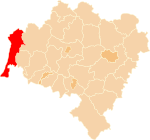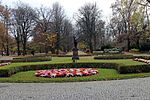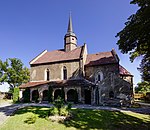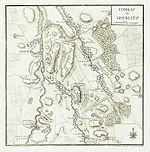Zgorzelec Miasto railway station
Polish railway station stubsRailway stations in Lower Silesian VoivodeshipRailway stations in Poland opened in 1948Zgorzelec
Zgorzelec Miasto (lit. Zgorzelec Town) is one of the two railway stations in the town of Zgorzelec, Lower Silesia, Poland. Since May 2007, the three-storey building located at the station is owned by the railway. After reconstruction, which is still pending, the building will become a combined railway and bus station with a shopping gallery. Until then, the ticket office serving the station is located in a kiosk nearby.
Excerpt from the Wikipedia article Zgorzelec Miasto railway station (License: CC BY-SA 3.0, Authors).Zgorzelec Miasto railway station
Zamiejsko-Lubańska,
Geographical coordinates (GPS) Address Nearby Places Show on map
Geographical coordinates (GPS)
| Latitude | Longitude |
|---|---|
| N 51.1549 ° | E 15.0201 ° |
Address
peron 1
Zamiejsko-Lubańska
59-900
Lower Silesian Voivodeship, Poland
Open on Google Maps










